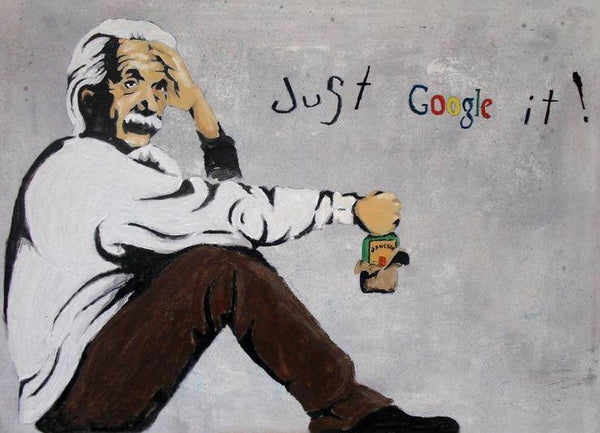
Hey, What's the Big Idea?
Share

Guernica, Picasso, 1937
Picasso's genius gave birth to "Guernica"; Degas, the ballerinas; and Banksy's graffiti (below) is clever political and social commentary.
How do artists choose their subject matter, and what inspires them?
Clearly, inspiration comes from many sources: war, beauty in nature, the human figure, emotions and more.

How and when inspiration arrives is equally diverse – while in the shower, while driving, during dinner – all suggesting states of relaxation.
This is what Elizabeth Gilbert suggests in her book, "Big Magic". What if, she muses, there are these big ideas floating up there, trolling for a human sponsor who is ready to take that big idea and run with it?
To which I say, "Well, hello, universe. Got anything for me?"
The fact is, I'm usually ready AND I usually get no answer. This is where my graphic design background kicks in.
Graphic designers can't afford to wait. They want the big idea. NOW. So how do you force inspiration?
Research.
As a designer, I'm accustomed to grabbing compendiums of the latest and greatest graphic designs, usually the American Institute of Graphic Arts or Graphis Annuals, and look. And look. Flip those pages while repeating quietly to myself the "problem" the client is trying to solve.
If it's a logo for a group whose theme is "mentorship", then that's what I repeat to myself as I flip those pages and look, and look, and look. Images and words stimulate visual metaphors.
For the next few days, I become consumed with "mentorship". I look for it everywhere – at interlocking tar patterns on the road as I run, at jigsaw puzzles that suddenly catch my attention at a store – even geese flying in a V formation while I wait for the traffic lights to turn green.
Here's the thing. I'm not waiting for the big idea. Rather, I coax the idea to come. It's more like a whisper. Psst, over here.

That's how I came up with this logo in 2002 for Golden Apple, an organization that works to inspire, develop, support, and award teacher excellence. I see an apple, hmmm, teaching. That works. I see two hands. Support.
No big magic here. I just flipped a lot of pages, looked around, and started doodling. Some things worked, many didn't. Word and image associations. It's exploring, and it's the fun part of being a designer.
Applying this technique to abstract art, at least for me, isn't easy.
Partly, it's because I don't usually start with a theme or an idea. At least not yet. And since abstract art does not rely on visual references in the real world, there is no A to B, because B does not yet exist.
I do begin with research and get inspired by what other artists are doing, especially those in the contemporary realm. I look at their use of color, the compositions, the mood, etc.
 But when it comes time to paint, it's me and that blank canvas staring each other down.
But when it comes time to paint, it's me and that blank canvas staring each other down.
And I always blink first. So I surrender. Some color and many layers later, something takes shape, a form emerges, or a color combination sings. I stand back, and marvel at the happenstance of it all.
I'm not sure it matters, then, where artists find inspiration, or whether we are inspired to create art. What matters is that we take that first step on a creative journey, even if destination unknown.
Photo (right): Jackson Pollock comes face to face with his canvas at his studio.
